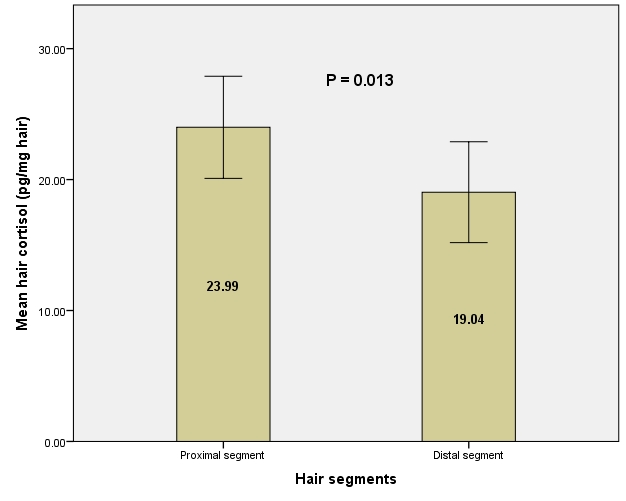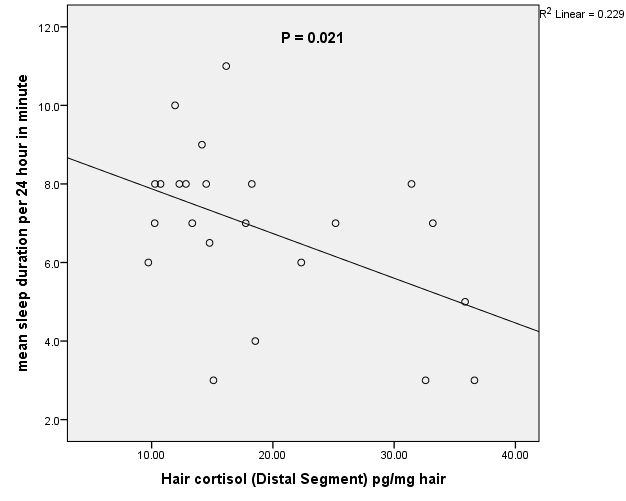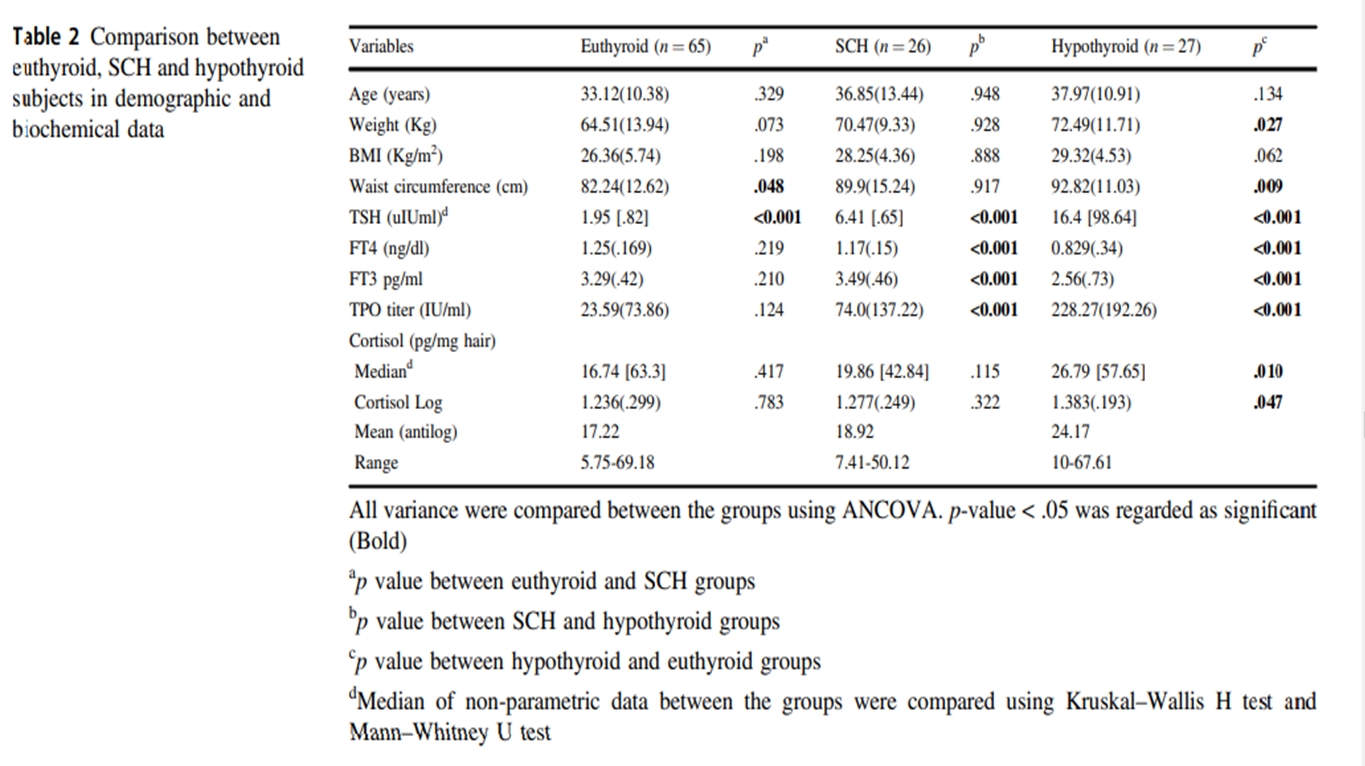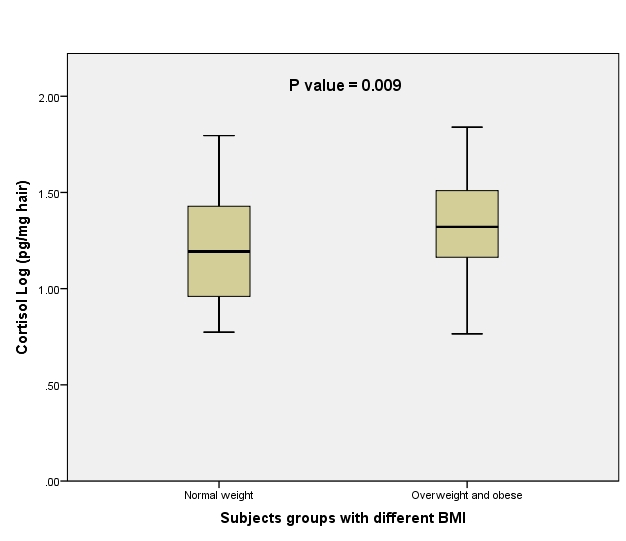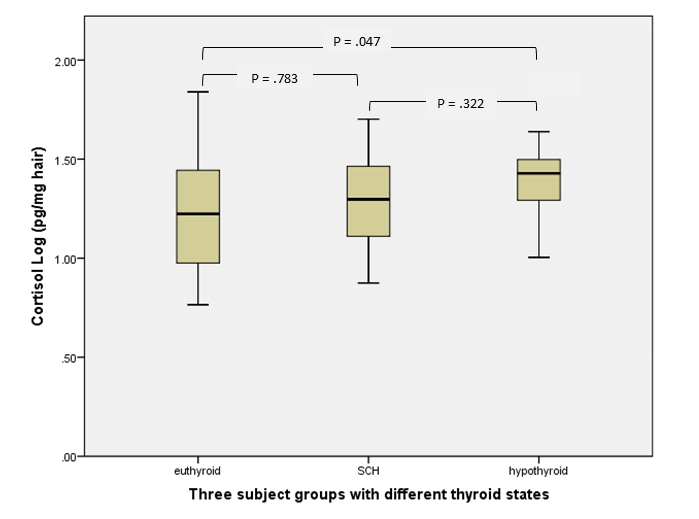Introduction: Hypothyroidism is associated with an increase in serum cortisol level while the long-term activity of hypothalamic-pituitary-adrenal (HPA) axis in hypothyroid, and subclinical hypothyroid (SCH) subjects has not been studied. Objectives: This study aimed to assess the hair cortisol levels as a long-term activity of HPA axis in hypothyroid, SCH, and a group of healthy adult subjects. Also, it aimed to examine the correlation of hair cortisol levels with hypothalamic-pituitary-thyroid (HPT) axis and anthropometric measures. Methods: We prospectively evaluated a group of normal (n=65), SCH (n=26), and hypothyroid subjects (n=27). Serum TSH, FT4, and FT3 were measured as a component of the HPT axis. Hair samples were collected, prepared, followed by extraction of hair cortisol and measurement in pg/mg of hair. Hair cortisol levels were compared in normal, SCH, and hypothyroid groups and correlated with HPT axis and anthropometric data. The study was approved by the ethics committee of the College of Medicine-University of Sulaimani under meeting number 62, and all procedures in the study have been performed in accordance with the ethical standards of the 1964 Declaration of Helsinki. Informed consent Written informed consent was obtained from all individual participants included in the study. The hair cortisol log transformed to normalize the distribution. After log transformation, the skewness was corrected, mean of hair cortisol log transformed (hair cortisol log) was used for the comparison and correlations. The Kruskal–Wallis H test and Mann–Whitney U test was used to compare the median hair cortisol and TSH levels between the groups. The mean of each data was compared between euthyroid, SCH, and hypothyroid subjects using ANCOVA, body weight, BMI, and waist circumference used as a covariate. Mean hair cortisol levels were compared between subjects with different BMI, using independent sample t-test, and mean of hair cortisol level between proximal and distal segment were compared using Paired samples T test. Correlation between hair cortisol levels with other variables was evaluated using Pearson’s correlation with p-value of ≤0.05 regarded as significant. Results: A total of 118 subjects were analyzed, and the mean hair cortisol level in healthy volunteers was reported to be 17.38 pg/mg of hair. Hair cortisol level was slightly higher in the SCH subjects, 18.19 pg/mg of hair; however, the difference was not significant. Compared to the euthyroid subject, a significantly higher hair cortisol level was recorded in the hypothyroid subjects, 24.17 pg/mg hair, p < .05. Hair cortisol was significantly and positively associated with each of the serum TSH, age, weight, and BMI (p < .05). Conclusions: Overt hypothyroidism but not SCH is significantly associated with higher hair cortisol levels compared to normal subjects, and significant relation between hair cortisol with HPT axis was found. Also, weight and BMI were positively correlated with hair cortisol level.
Physiology 2021 (2021) Proc Physiol Soc 48, PC030
Poster Communications: Assessment of hair cortisol in euthyroid, hypothyroid, and subclinical hypothyroid subjects
darya abdulateef1, Taha Mahwi1
1 University of Sulaimani, College of Medicine, Sulaymaniyah, Kurdistan region, Iraq
View other abstracts by:
Where applicable, experiments conform with Society ethical requirements.

